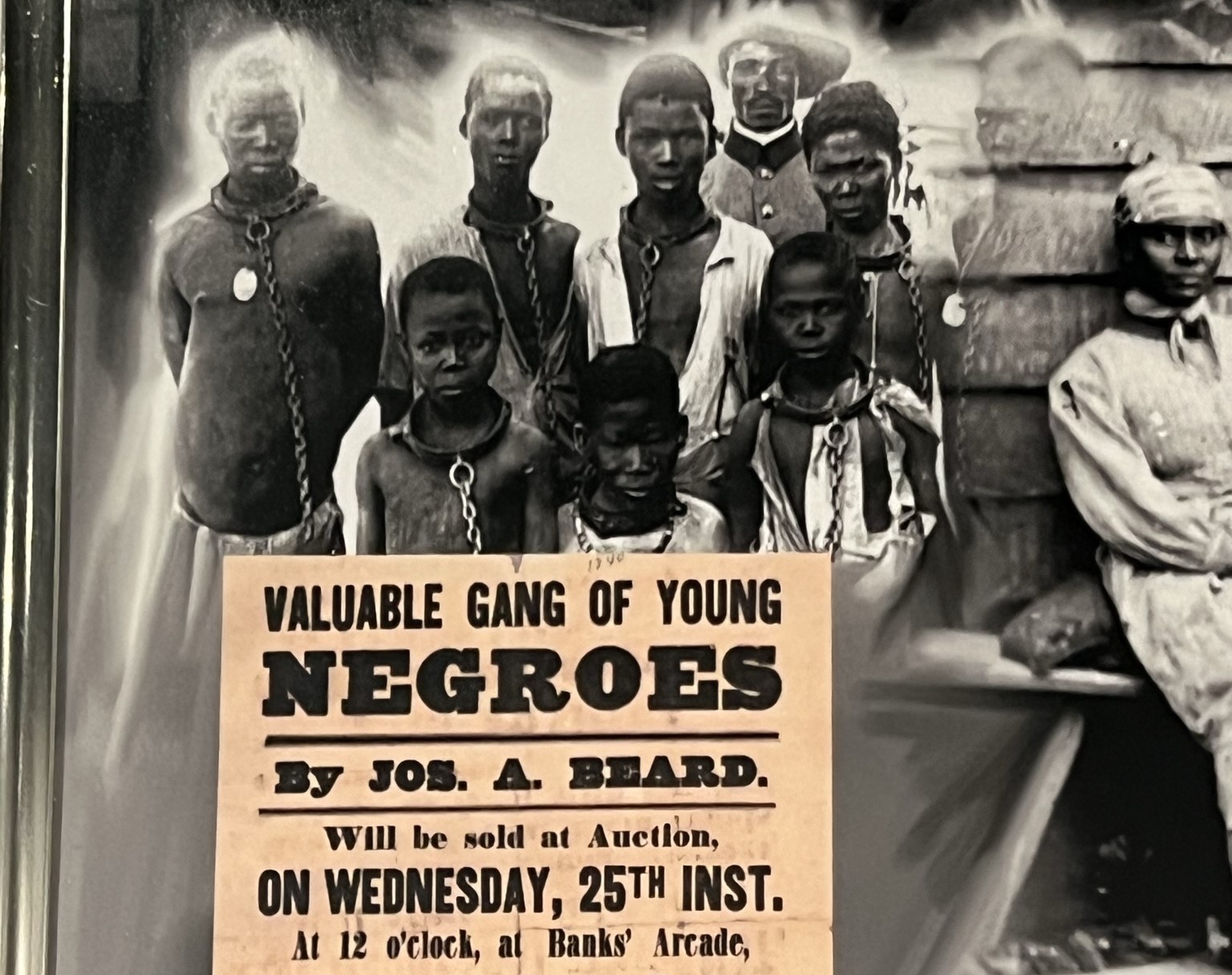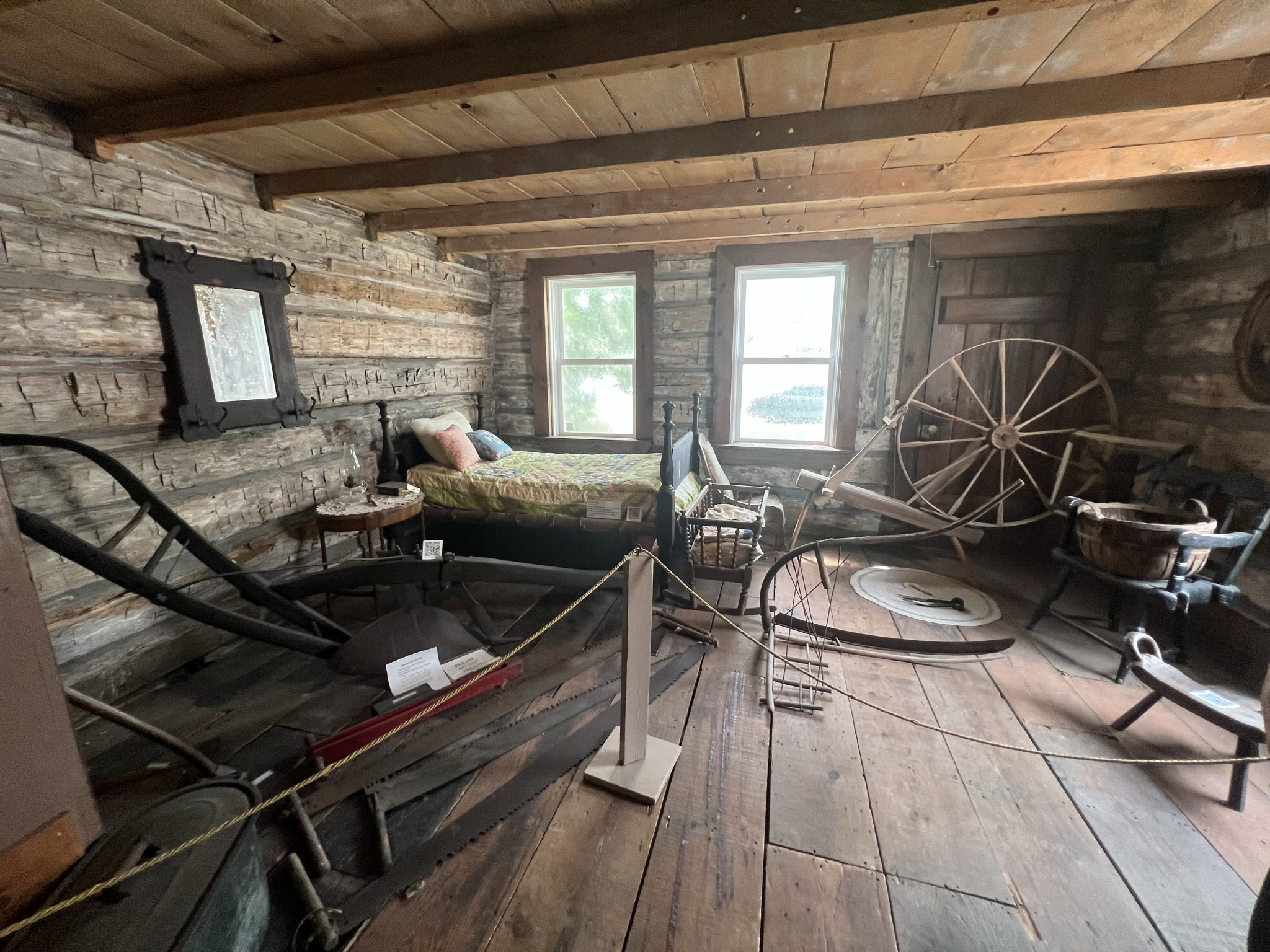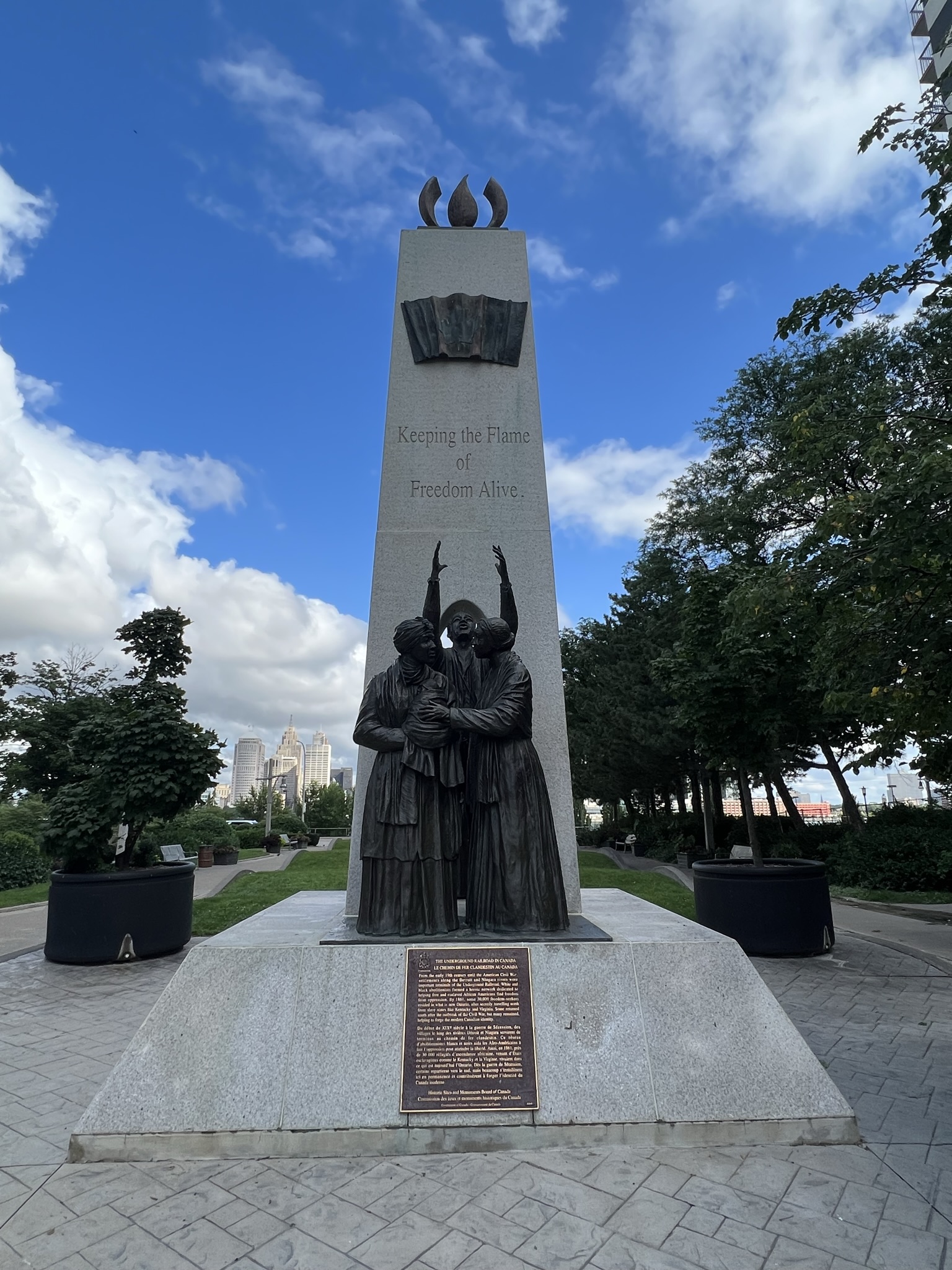
Remembering & Honouring: Black History In Windsor Essex
Southwestern Ontario is blessed with many gifts, among them fine people, a relatively benign climate, cool waterfront towns, luscious agricultural land, and tons of great outdoor activities to try.
I’ve come to understand there’s also a wonderful, rich Black History to explore that’s both painful and inspiring.
On my latest visit to Windsor-Essex-Pelee Island tourism region I was lucky enough to get a guided tour of the Amherstburg Freedom Museum, and to visit the Sandwich First Baptist Church.
Being relatively easy to reach from Detroit, the Windsor area was a very popular entry point to Canada on the Underground Railroad, the clandestine routes that enslaved Blacks in the U.S. used to escape to freedom.
Amherstburg Freedom Museum
The Amherstburg Freedom Museum includes exhibition space and the Nazrey A.M.E. Church – national historic site and stop on the Underground Railroad. It also includes the Taylor Log Cabin – home of a formerly enslaved man and his family.

The museum section has informative and educational displays on slavery and local Black life in the area. But many of the contents are terrifying.
I peer at one display and spot a photograph of a pamphlet showing a group of young, Black men who were being sold at auction. One of the boys looks no older than 10 or 11.
“Valuable Gang of Young Negroes,” the advertisement reads, as if it was a newspaper brochure selling loaves of bread or a box of vegetables.

Another display shows a young man wrapped in chains and a fishing net.
It’s horrific, but I force myself to read on.
Other displays tell the story of enslaved Blacks in their own words. In one gut-wrenching exhibit, a man named William Moore talks about how slaves would gather quietly and pray in their cabins.
“They git to moanin’ low and gentle, Som day, some day, some day, this yoke gwine be lifted off our shoulders.”
Below Moore’s story are words from Sarah Gudger, a Black woman who lived to the ripe age of 121. Gudger tells the story of an amazing meteor shower she and her mother and siblings witnessed one night in 1833.
“Da sta’s was fallin’ jes like rain. Mammy wah tebble skeered, but we chillen wa’nt afeard, no, we wa’nt afeard. But mammy she say evah time a sta’ fall, some buddy gonna die.
“Yo’ know de sta’s (stars) don’ shine as bright as dey did back den,” she continues. “I wondah wy dey don’. Dey jes’ don’ shine as bright. Wa’nt long afoah dey took mah mammy away, and I wah lef’ alone.”
One of the exhibits tells the story of Alexander Ross, an ornithologist from Belleville, Ontario who would often travel to the U.S. on the guise of examining birds, when his actual goal was helping Black slaves connect to the Underground Railroad and escape to Canada. Ross became well-known and was invited to the White House to meet President Abraham Lincoln, who asked Ross to help break up a group of Confederate sympathizers in Montreal.
Another exhibit talks about Black history in Canada, which dates back to the 1600s.
“The role of Blacks in Canada has not always been viewed as a key feature in Canada’s historic landscape,” the display states. “There is little mention that some of the Loyalists who came here after the American Revolution and settled in the Maritimes were Blacks, or of the many sacrifices made by Black Canadian soldiers as far back as the War of 1812.”
Tour guide Aanand Arya also tells us there were 40,000 slaves in Canada at one time, before the practice was abolished by the British government.
“Not too many Canadians are aware of that,” he says.
The museum also talks about Black culture, including a note about Black Drag Queen Balls. There’s also some information about a Black woman I’ve read about before, Mary Ann Shadd, who helped start a newspaper in Windsor called the Provincial Freeman.
“Shadd … was well known for her sharp tongue and biting editorials. Shadd is acknowledged as the first Black newspaperwoman in North America; she may also have been the first woman publisher of a newspaper in Canada.”
The old A.M.E. (African Methodist Episcopal) church is a modest but pretty building that was erected in 1848, which means this year marks its 175th anniversary.
As we tour the church with Arya, he tell us that Amherstburg was a good spot for escaping slaves as the Detroit River is more narrow here than in other spots.
“Some slaves could cross into Canada on the ice, but if they were from Alabama or Mississippi it would’ve been a shock, and they likely wouldn’t have had proper clothing. There’s also a very strong current.”’
Arya tells us that many experts believe there was a trap door in the church, which Blacks would use to hide from slave owners or bounty hunters. The mental image of a family of human beings cowering in the dirt under the floor of a church haunts my mind weeks later.
Arya says the Canadian government promised escaping slaves they could have citizenship, but that it couldn’t guarantee their safety.
“Some people stayed in Amherstburg despite the bounty hunters,” he tells us. “Some fled to Toronto or other cities further from the border.”
The last service was held at the church in 1988, Arya explains. But it’s been recognized as a national historic site and they’ve been able to get funding to fix things up.

After visiting the church, Arya shows us the small Taylor cabin, which dates to 1855 and has been done up to give visitors a taste of what life might have been like at the time. There are old metal tools and an old plow, as well as a small bed two rooms upstairs. The artefact that grabs my attention is a “birthing chair” that mothers would’ve used when their babies were due. The chair is inscribed with names, including Louis, Michael and Kathleen, along with dates in the 1940s. Whether this chair was used to help deliver babies, I have no idea. But it’s not exactly anyone’s idea of a hospital ward.
Tower of Freedom Underground Railroad Monument
The day after visiting the museum we also stop by the Tower of Freedom in downtown Windsor, a powerful monument that celebrates the Underground Railroad.

There’s another monument on the Detroit side of the river, which features freedom seekers awaiting transport to Canada. The Windsor tower depicts their arrival in Canada and shows two women with a baby and a man standing behind them with his arms outstretched, as if he’s celebrating their hard-fought freedom.
Sandwich First Baptist Church
We also visit the Sandwich First Baptist Church, a simple but pretty brick affair with an interior, polished wooden roof that resembles an inverted ship’s hull and pure white walls.
The church is part of the African Canadian Heritage Tour, a trail that takes visitors to important Black sites across southwestern Ontario. It’s also a national historic site.

“The Sandwich First Baptist Church represents the once numerous Black border-town churches which were built to serve the rapidly increasing numbers of Underground Railroad settlers,” the Canadian government website states. “This church received, sheltered, and assisted many of these new arrivals.
“All members were required to aid in its construction by giving donations or making bricks. A focal point for many local anti-slavery activities, the Sandwich First Baptist Church stands as an important symbol of that struggle.”
Lana Talbot, the church’s heritage coordinator and clerk, tells us the church was built in 1851 by escaped slaves who used clay from the Detroit River.
There are more disturbing posters on the wall of the church that advertise a sale of slaves. I also spot an old bookcase with battered Bibles and hymn books, as well as well-worn tambourines.
Talbot tells us the church had a trap door for fugitive slaves to use, and that many slaves escaped through Amherstburg.
“They (slave owners) took our memories. They took our heritage. They took our culture,” she says.
Talbot says Canada wouldn’t allow American bounty hunters to take escaped slaves back over the border. But she also notes that John Graves Simcoe, the first Lieutenant Governor of what was then called Upper Canada, argued against slavery but owned some himself.
“What does that tell you?”

Among the notable guests at the church over the years are Harriet Tubman, who wrote the classic “Uncle Tom’s Cabin,” and U.S. civil rights figure Rosa Parks.
Members of a Baptist Church in Haiti visited last year and put on a concert.
“They were on fire,” Talbot tells us. “I think they literally raised the roof.”
There are only a few dozen members left in the congregation, “but we soldier on,” she says.
Talbot says she hopes the church can buy an old house next door and turn it into a Windsor Underground Railroad Museum, which sounds like a wonderful idea.
Original Blog Written By Jim Byers
Click here to explore the pivotal role our region played in the Underground Railroad Movement.

